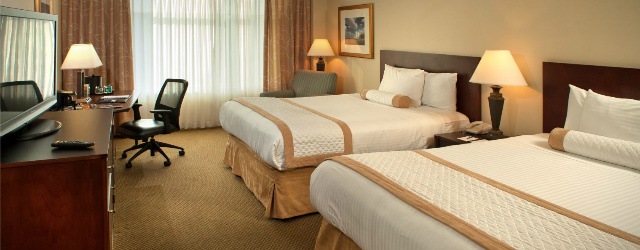Hotel occupancy down last month in four Arkansas metros, below national trend
by July 31, 2017 11:52 am 981 views

Nationwide, the hotel industry showed record-setting occupancy rates in June, according to the industry statistics resource STR. The same cannot be said for the Northwest Arkansas, Jonesboro, Fort Smith and Little Rock metros.
In a year-over-year comparison with June 2016, STR reported occupancy for the hotel industry nationwide at 73%, up 0.7%. The industry set a record of room nights sold for the month of June, according to a STR press release. Average daily rate (ADR) nationwide was up 2% to about $129. Revenue per available room (RevPAR) was up 3% to about $95, according to STR.
Though Arkansas metros showed improvement in some of these key metrics, occupancy was down in the state.
“The hotel industry is cyclical,” said Chet Patel, president of Pinnacle Hotel Group in Little Rock and incoming chair of the Arkansas Lodging Association.
In Arkansas, mid-summer and mid-winter tend to be slow seasons, though that might not be the case in other states, he said. “It just depends on where you are.”
In the Fayetteville-Springdale-Rogers-Bentonville metro market, occupancy was below expectations in June, said Annette Nichols, general manager of Hyatt Place in Rogers. Though occupancy in June was 77%, higher than the national average, it was down 1% from June 2016, according to STR.
In a market largely dependent on corporate meetings from Wal-Mart Stores and other Fortune 500 companies in the area, the hotel industry is tied to those companies’ activities, Nichols said. Layoffs at Wal-Mart, for example, have slowed things down. Room rates, however, were a bright spot in the June STR metrics, she said.
“Occupancy dipped a lot more than we thought in this market, but ADR is holding strong.”
The average room rate was about $93, up 2.7% in June, according to STR. The daily rate is a key indicator for the industry, Nichols added. Revenue per available room was about $72, up 1.7%. At a year-to-date average of $59.63, revenue per room was up 5% through June, according to STR.
“Heads in beds is great, but 100% occupancy doesn’t always mean you’re coming out ahead.”
Nichols projects that the strong rates will continue in 2018, though occupancy is harder to predict.
“It’s all about demand. Supply is plentiful,” she said.
Supply was up 0.6% year to date, and demand was up 1.3% year to date. Revenue for area hotels was $17.1 million in June, up 2.6% from 2016, according to STR. NWA hotels brought in $85.7 million year to date through June.
Occupancy has taken a hit on the Jonesboro hotel scene so far this year. It was down 4.6% in June, to 65% occupancy. Year to date, occupancy in Jonesboro hotels was 58%, down 5.5%, according to STR. Rates were up 2% to about $87. Revenue per room was about $57, up down 3%, according to STR. Supply was flat in June, and demand was down 4.6%. Revenue was $2.6 million, down 2.7% from June 2016. Year to date, Jonesboro area hotels have brought in $14 million, according to STR.
The Fort Smith-Russellville-Interstate 40 metro area showed a 6% drop, year over year, in hotel room occupancy rate to 63% in June, according to STR. The year to date average occupancy rate was 58%, down 3%. Average room rate was down 0.5% to about $74, and revenue per available room was down 6.5% at about $47, according to STR.
At the same time, supply was up 5%, and demand was down 1.5%. Revenue for June was $6.7 million, down 2% year over year, according to STR. Year to date revenue through June was $36.3 million.
In the Little Rock market, occupancy was 65%, down 3% from June 2016. Average room rate was about $86, up 3%. Revenue per room was about $56, down 0.5%. Supply was up 2%, and demand was down 1%. Little Rock hotels brought in a collective $22 million in June. So far this year, they’ve brought in $110 million.
Following is the STR forecast for hotel industry nationwide for 2018.
• 2.2% increase in supply
• 2% increase in demand
• 0.2% decrease in occupancy
• 2.7% increase in average daily rate
• 2.5% increase in revenue per available room
